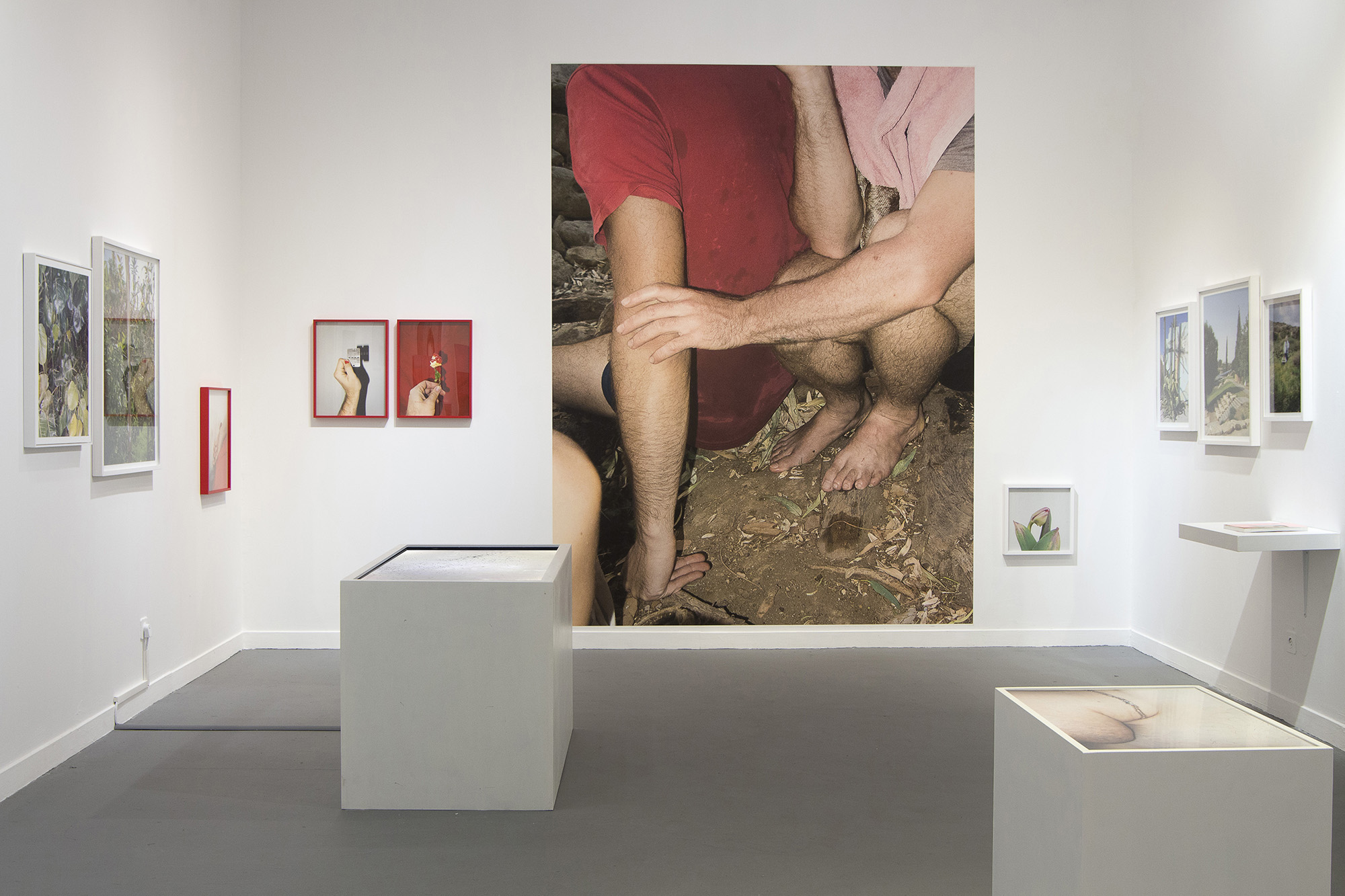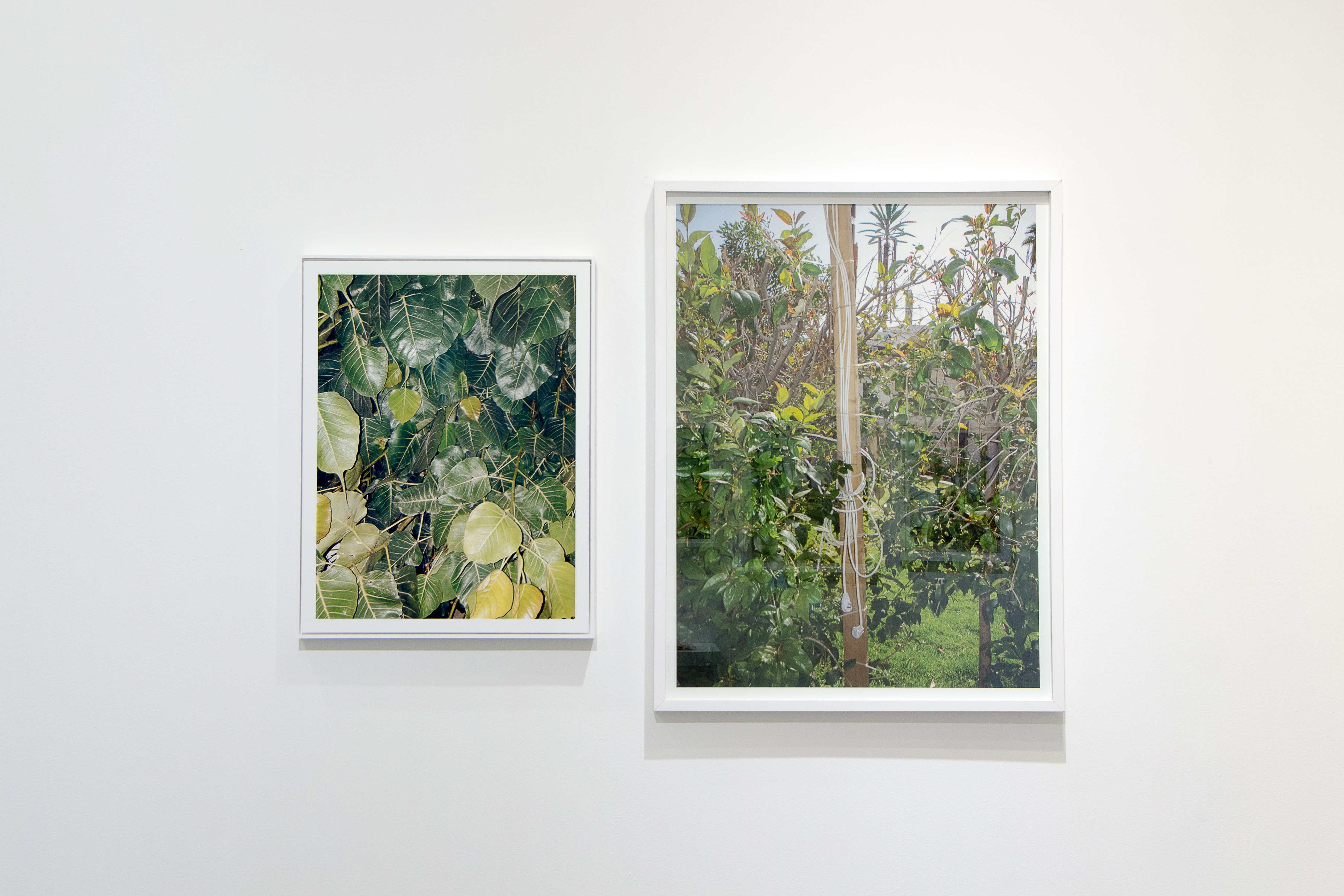Doing Right by You,
Haifa Museum of Art, 2020
The exhibition is based on Meiry's artist'sbook, Doing Right by You, published in 2018. Thebook is based on an archive containing about 150
photographs, in which the artist photographedthemself, the people close to them, and the spacesaround them. As in other projects, Meiry uses lowtechtechnologies alongside digital media.
Following the book, the photographs in this exhibitionpresent a violent, disturbing connection between Israeli spaces and queer bodies. The complex images are at one and the same time feminine and masculine. They reveal a deep fracture in the binary role division that accompanies the modern gaze,
which routinely labels, sorts, and categorizes. Culture scholar Sivan Rejuan Shtang notes that Meiry's photographs center on the relationship between the body, classified according to gender,
and territory that is classified as "national." According to Shtang, "The bodies appearing in Meiry's photographs are simultaneously vulnerable and bold."
The bodies that appear in Meiry's artistic territory can be considered using in the philosophical terms proposed by Gilles Deleuze and Félix Guattari.
Deleuze and Guattari posit that territory is always corporeal, and that the body is always territorial.
Following the book, the photographs in this exhibitionpresent a violent, disturbing connection between Israeli spaces and queer bodies. The complex images are at one and the same time feminine and masculine. They reveal a deep fracture in the binary role division that accompanies the modern gaze,
which routinely labels, sorts, and categorizes. Culture scholar Sivan Rejuan Shtang notes that Meiry's photographs center on the relationship between the body, classified according to gender,
and territory that is classified as "national." According to Shtang, "The bodies appearing in Meiry's photographs are simultaneously vulnerable and bold."
The bodies that appear in Meiry's artistic territory can be considered using in the philosophical terms proposed by Gilles Deleuze and Félix Guattari.
Deleuze and Guattari posit that territory is always corporeal, and that the body is always territorial.
In this context they coined the term "geo-body." For them, the "body" is perpetually in a process of becoming – as a concept, image, or role. In this sense, Meiry creates bodily territories or territorial bodies that reorganize relations between the images, roles, and concepts of sexuality, gender, and Zionism.
In Meiry's works, bodies "become queer." Heteronormative hysical appearance becomes fluid and s not subject to essentialist and incontrovertible oncepts.
Meiry creates an intense, courageous
body of works that grants visibility to the local queer-feminist community. This act necessarily situates them on the margins of the Israeli sociopolitical rena. The forms appearing in the works eflect a position that calls for the dismantling f the powerful Zionist regime of visibility in the thnocratic State of Israel. In the twenty-first entury, this state is still based on a binary and ierarchical gender role division, which Meiry seeks to question.
Meiry creates an intense, courageous
body of works that grants visibility to the local queer-feminist community. This act necessarily situates them on the margins of the Israeli sociopolitical rena. The forms appearing in the works eflect a position that calls for the dismantling f the powerful Zionist regime of visibility in the thnocratic State of Israel. In the twenty-first entury, this state is still based on a binary and ierarchical gender role division, which Meiry seeks to question.
Svetlana Reingold

Yossi, 2014, 60x45 / Andi and Herzl, 2017, 150x200
Flower Necklace, 2014, 40x30 / Rash, 2014, 40x30
Orchid, 2009, 40x30
// Archival inkjet and ChromaLuxe prints
 Pillows, 2014, 50x60 / Ein Ovdat, 2017, 150x200
Pillows, 2014, 50x60 / Ein Ovdat, 2017, 150x200see previous / Cherry Blossom, 2010, 60x45
Aloe Vera in Hukok, 2016, 53x40 / Pendant #3, 2016, 30x40
// Archival inkjet and ChromaLuxe prints

Central wall: Dog Tag, 2014, 37.5x50 / Pomegranate, 2017, 37.5x50
Guli and Or, 2017, 225x300 / Tulip (Emerging Bud), 2016, 35x35
// Archival inkjet prints
 Dog Tag, 2014, 37.5x50 / Pomegranate, 2017, 37.5x50
Dog Tag, 2014, 37.5x50 / Pomegranate, 2017, 37.5x50// Archival inkjet prints
 Sacred Fig, 45x60, 2016/ Outside the Cave of the
Patriarchs, 70x90, 2014
Sacred Fig, 45x60, 2016/ Outside the Cave of the
Patriarchs, 70x90, 2014// Archival inkjet prints

Agave, 2016, 45x50 / Getting Ready for Independence, 2016, 57x70
Irises (with My Sister), 1990, 35x50
// Archival inkjet prints
© Yael Meiry 2025